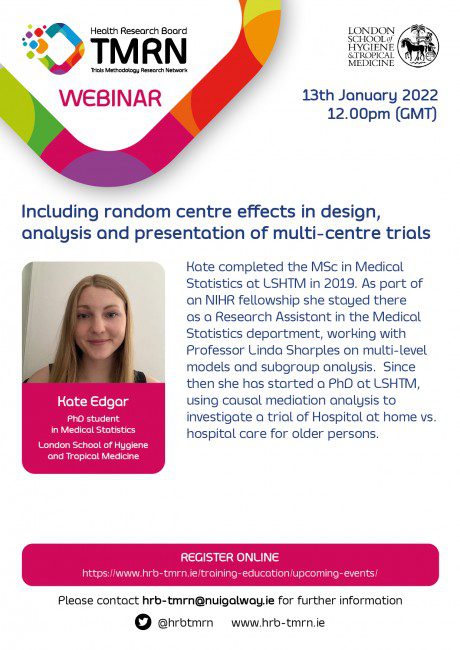Kate Edgar, PhD candidate at London School of Hygiene & Tropical Medicine (Thursday 13th January)
In large multicentre trials in diverse settings, there is uncertainty about the need to adjust for centre variation in design and analysis. A key distinction is the difference between variation in outcome (independent of treatment) and variation in treatment effect. Through re-analysis of the CRASH-2 trial (2010), this study clarifies when and how to use multi-level models for multicentre studies with binary outcomes. The trial data had a hierarchical structure, with patients nested in hospitals which in turn are nested within countries. Reanalysis of CRASH-2 trial data assessed treatment effect and both patient and centre level baseline covariates as fixed effects in logistic regression models. Random effects were included to assess where there was variation between countries, and between centres within countries, both in underlying risk of death and in treatment effect. It is important to distinguish between underlying variation in outcomes and variation in treatment; the former is common but the latter is not. Stratifying randomisation by centre overcomes many statistical problems and including random intercepts in analysis may increase power and decrease bias in mean and standard error estimates.
Kate Edgar completed the MSc in Medical Statistics at LSHTM in 2019. As part of an NIHR fellowship she stayed there as a Research Assistant in the Medical Statistics department, working with Professor Linda Sharples on multi-level models and subgroup analysis. Since then she has started a PhD at LSHTM, using causal mediation analysis to investigate a trial of Hospital at home vs. hospital care for older persons.







